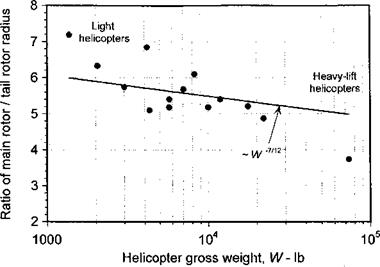Design of Tail Rotors
The vast majority of helicopters in production are of the single main rotor with tail rotor configuration. The primary purpose of the tail rotor is threefold. First, the tail rotor provides an anti-torque force to counter the torque reaction of the main rotor on the fuselage. Second, the tail rotor gives yaw stability and provides the pilot with directional control about the yaw axis. Third, the aerodynamics of the tail rotor provide the helicopter with a significant weathercock stability. For example, if the helicopter is yawed nose-left, then the tail rotor will experience an effective climb. If the collective pitch is held constant, then this will result in a decrease of thrust (a result of the higher inflow) and a restoring moment about the yawing axis. Similarly, if the helicopter yaws nose-right, the tail rotor experiences an effective descent, with an increase in thrust, and again, a restoring moment is produced. This weathercock stability is a useful characteristic of tail rotors, but it can also make helicopters less maneuverable.
The tail rotor has to operate in a relatively complex aerodynamic environment and its operation is affected by the main rotor wake, the main rotor hub and the empennage. However, to be effective it must produce thrust with the relative flow coming from essentially any direction. This means that the aerodynamic design requirements for the tail rotor are different in some respects from those of the main rotor. For these reasons, it is known to be difficult to design a tail rotor that will meet all the various interdependent aerodynamic,
|
Figure 6.29 General trends of main rotor size to tail rotor size versus helicopter gross weight. |
control, stability, weight, and structural requirements. See Lynn (1970), Cook (1978), Byham (1990), and Newman (1994) for a detailed overview of tail rotor design issues.












